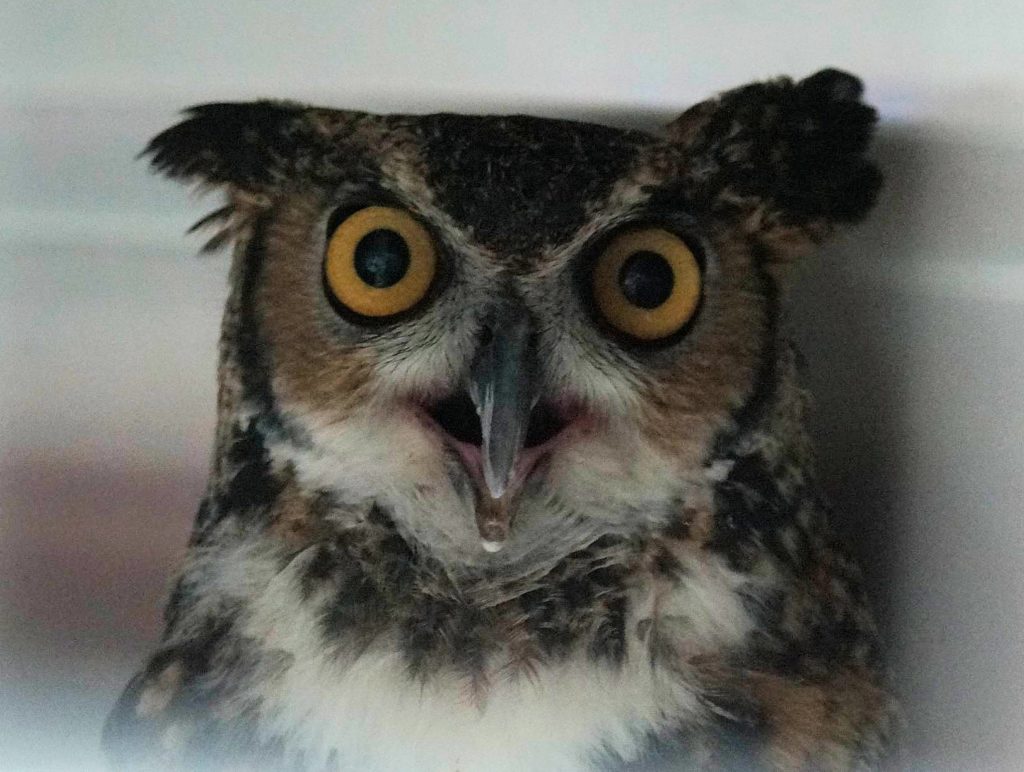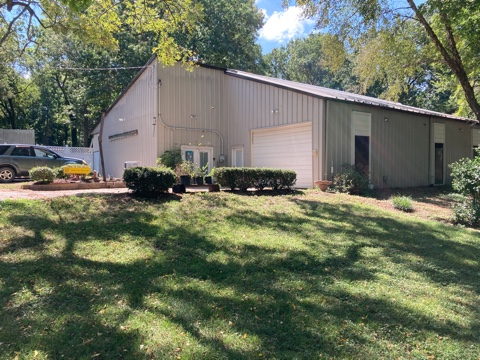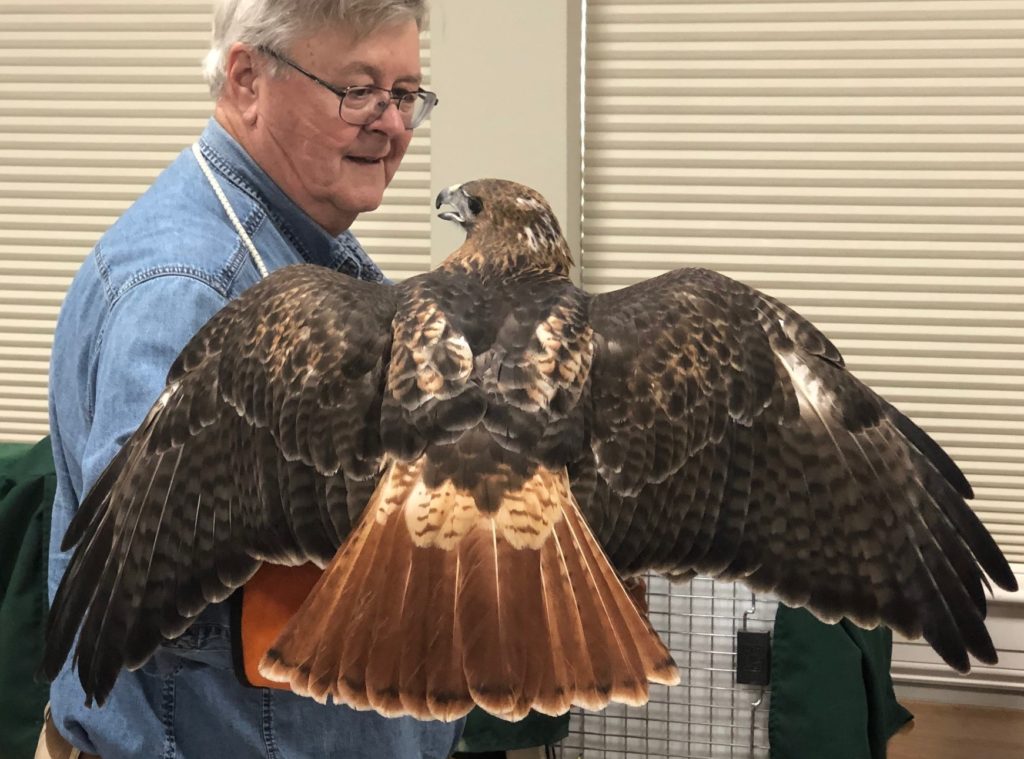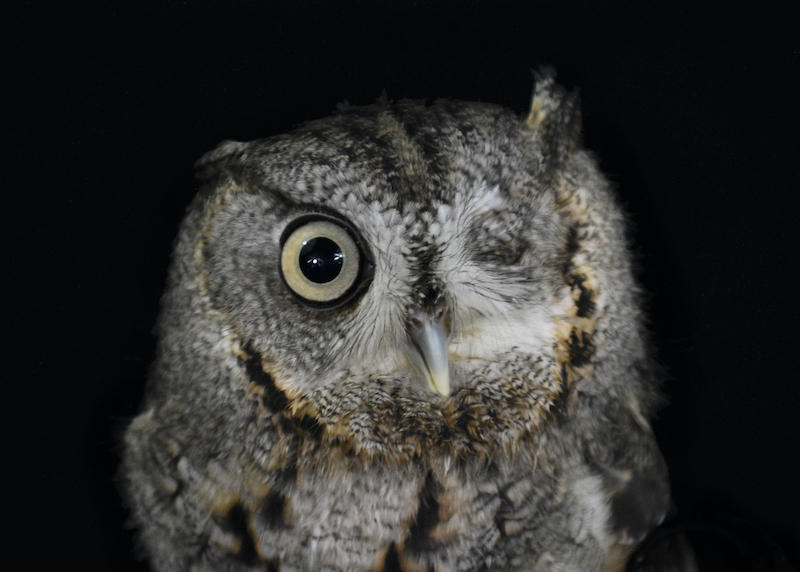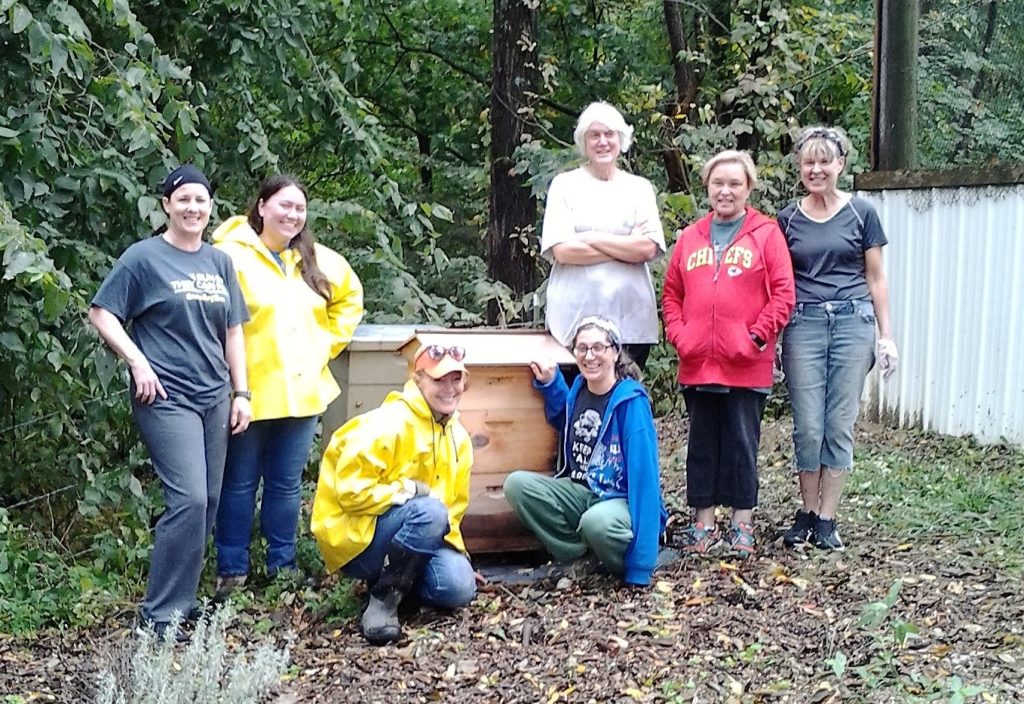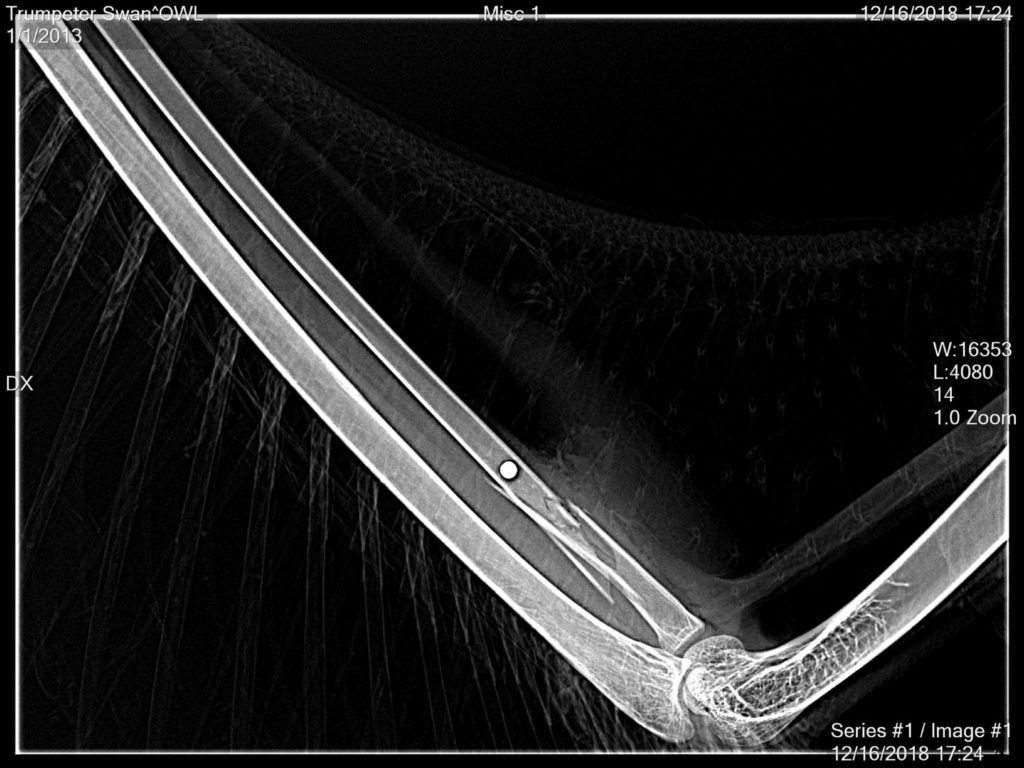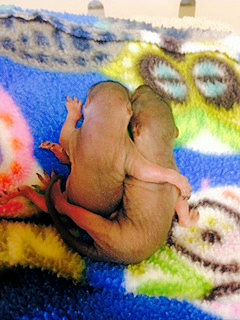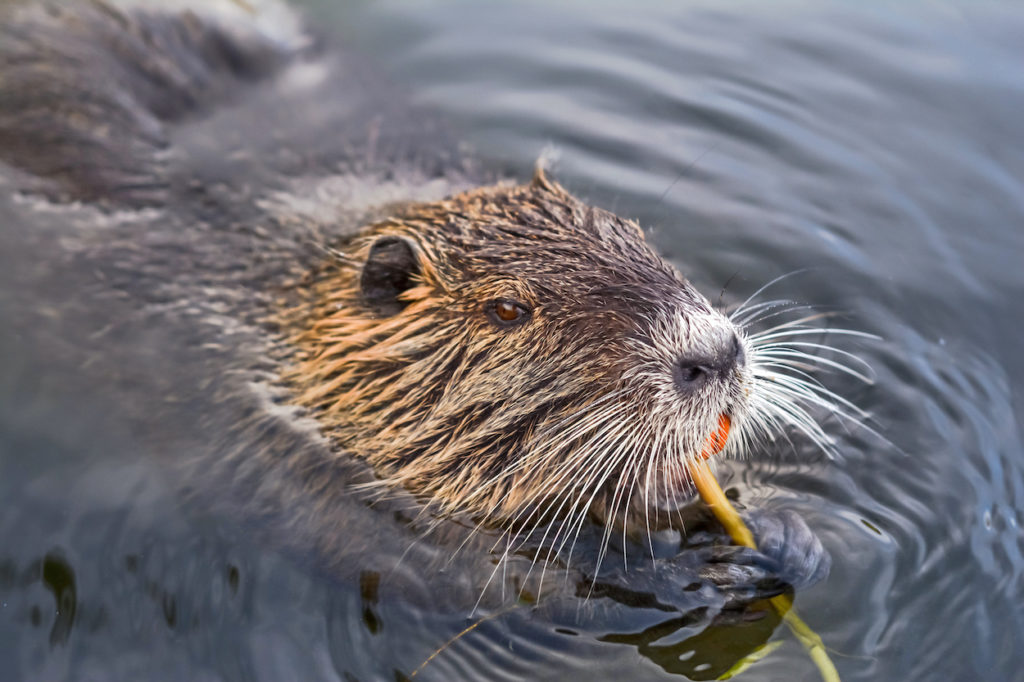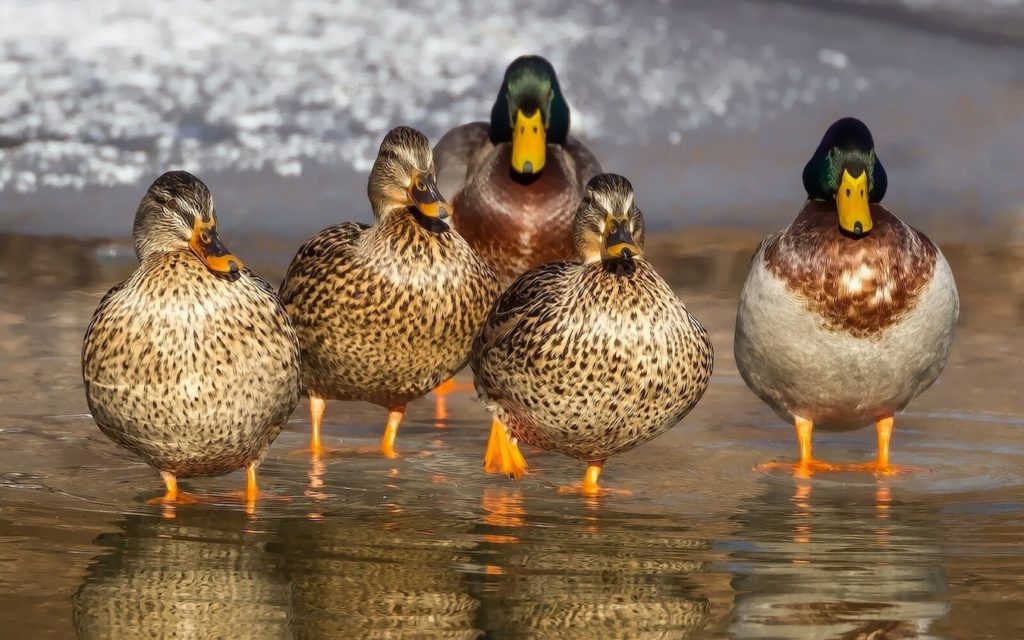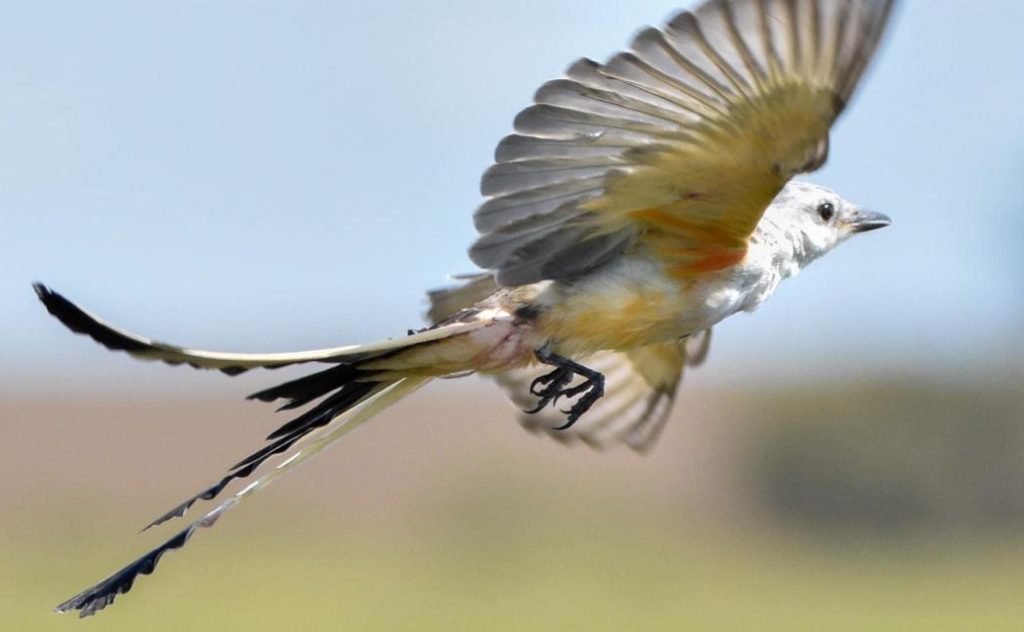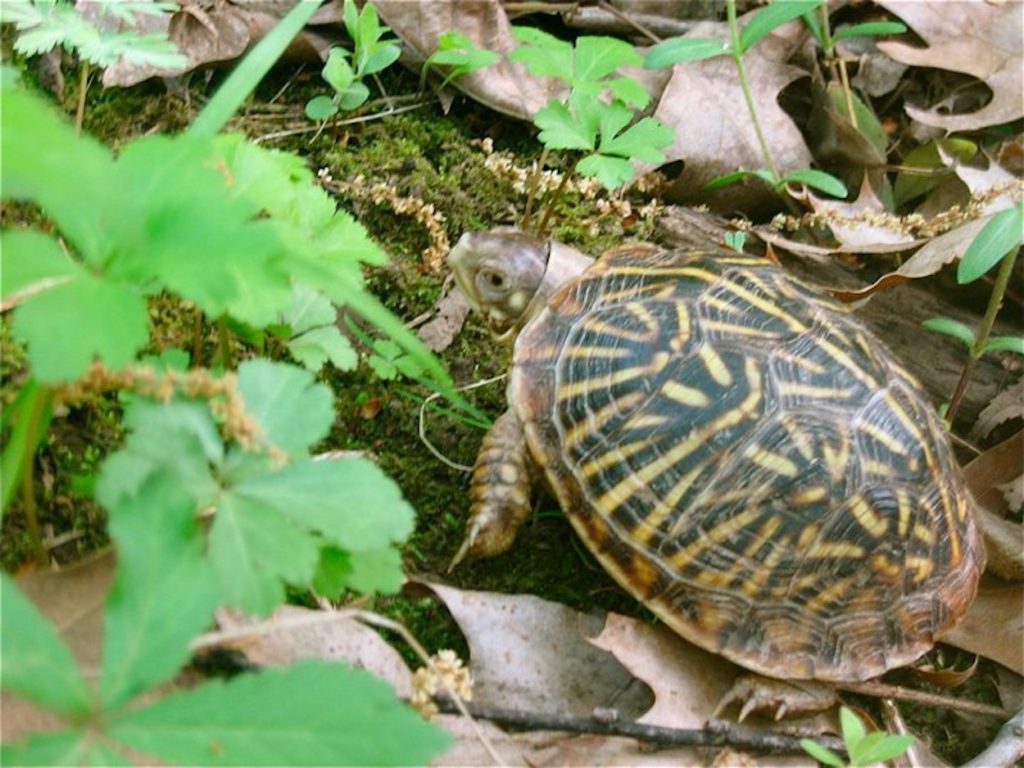About
Raptor (Falcon, Hawk, Owl, Eagle)
Raptors are birds of prey. They hunt but will also scavenge for carrion. Raptors are at the top of the food chain, and they have three physical characteristics that set them apart from other birds:
- Strong grasping feet with sharp talons used to seize prey.
- Hooked or hook-tipped beak used to kill and consume prey.
- Diet that consists mostly of meat.
- Most raptors are diurnal, meaning they are active in the daytime. These include eagles, hawks, owls, falcons and osprey.
- Owls are nocturnal. Though raptors have great eyesight, it is not a trait exclusive to them. Raptors do not have a sense of smell.
Injured bird of prey – To rescue or not to rescue
Rule #1: Any normal, healthy, wild bird, when approached by a person, will fly away. If it doesn’t, something is wrong, and it needs to be brought in. The only exception is a fledgling raptor on the ground that is learning to fly. CALL US BEFORE you decide to pick up a fledgling. We’ll ask questions to determine if it needs help or is in a normal state of its development. Many time these birds are pushed out or blown out of a nest during storms. We have a professional tree climber that has specialized skills for returning them to the nest.
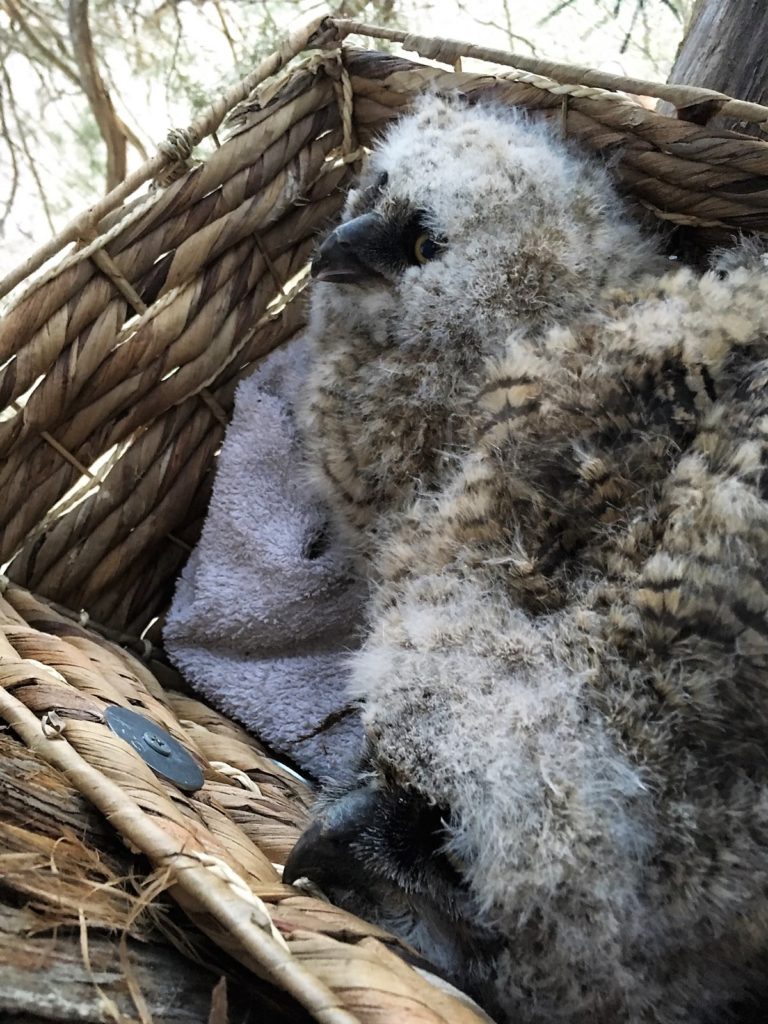
Safely Catching/Handling Sick, Orphaned, or Injured Raptors
The degree of difficulty and the risk involved in attempting to rescue an injured raptor depends greatly on the species of bird, its size, and its injury. In general, small birds are easier and less risky to handle. A hawk hit by a car and knocked unconscious is not a problem to pick up, but the same bird, if alert, can be a handful. An injured bird will not understand your helpful intentions. They still perceive you as a threat and will resist your efforts.
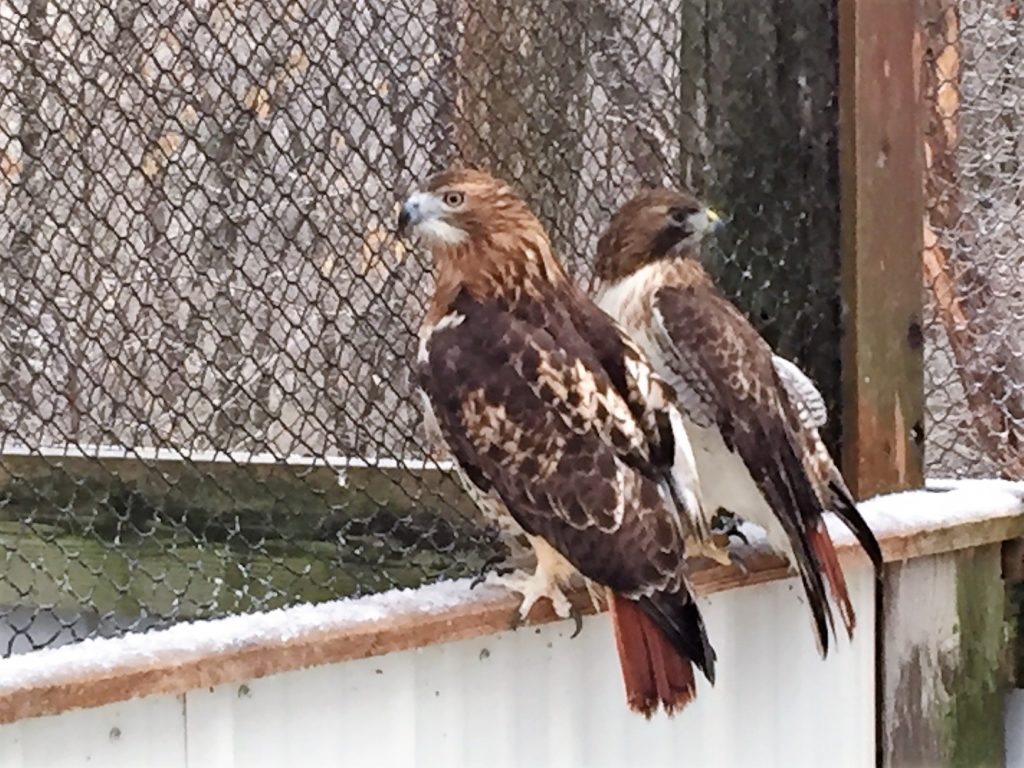
Be Prepared
The best way to contain and transport an injured wild bird is in a cardboard box. The box should be large enough so that the bird fits comfortably without being cramped. Punch a few air holes in the sides and put a towel or a piece of old carpeting on the bottom so the bird is not on a slippery surface. Secure the box by using masking tape to seal. Pet carriers can also be used. Placing the bird in a closed, secure, darkened environment is the first treatment for shock and is very important. It will help keep it calm, reduce additional stress, and prevent it from causing further injury to itself. Do not transport wild birds in wire cages or glass aquariums.
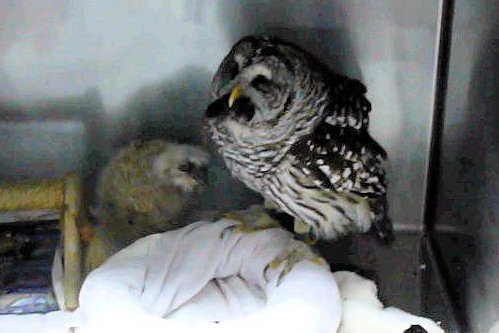
Raising birds of prey
Birds of prey are protected by federal law and it is illegal to possess one without proper permits. Birds of prey should be raised by their parents if at all possible. It is important for social, behavioral, psychological and sexual development. Younger birds that can not be returned to nests or are injured are raised at our facility with “foster parents”.
Step by Step Instructions
- Have your box or kennel ready with a towel in the bottom so the bird has secure footing.
- Get another towel, blanket, jacket, or any other lightweight item large enough to cover the entire bird.
- Wear welding gloves to protect your hands and arms. Although their beaks are formidable weapons, the real threats are their incredibly strong feet and long, sharp talons. Their grip is vise-like, and large hawks and owls are capable of inflicting serious injury.
- Approach the bird from behind if possible. If the bird is alert and can follow your movements, it may turn to face you, or flip onto its back with its talons in the air. Anticipate that it will struggle when first covered.
- When close enough, carefully place the cover (jacket, towel, blanket) over the bird, making sure it is completely covered. Gather up blanket and bird together, keeping its talons facing away from your body.
- Restrain the bird by tightening the covering and place in a cardboard box, animal carrier, or other secure container.
- Do not remove the covering from the bird unless you feel certain you can do so without harming yourself. The bird may have grasped the covering in its feet. If so, leave the covering in the box with the bird.
- If it is warm, place the box or container in a cool place, as birds can overheat quickly.
- Do not attempt to give the bird water or food – either may complicate the injury, especially an internal one.
- Make a note of where the bird was found. Raptors mate for life, and once rehabbed, it will be returned to that area. Juveniles will need a nest to return to so the parents can continue to care for it.
- Contact OWL immediately.
Common Concerns
Shut the lights off in the warehouse open one door and “push” the bird towards the light. For tall warehouses and birds that have been in there for several days we have bal-chatri traps that we use to capture raptors. Management should call us so we can develop a plan for removal.
These birds are often found in or on the side of the road often suffering head trauma, fractured wings or internal injuries. Contain them first and contact us immediately.
We primarily see diurnal birds that are chasing smaller songbirds with this type of injury – most often it is a head injury but can be a fractured wing. They are often found under the window or in bushes close to the house. They are disoriented and unable to fly in a straight line. Contain them and contact us immediately.
We see this primarily in bald eagles. An eagle that is on the ground and cannot fly may have lead poisoning. Capture and transport are paramount and even a delay of a few hours can mean the difference between life and death. Call us immediately if you find a bald eagle that is grounded.
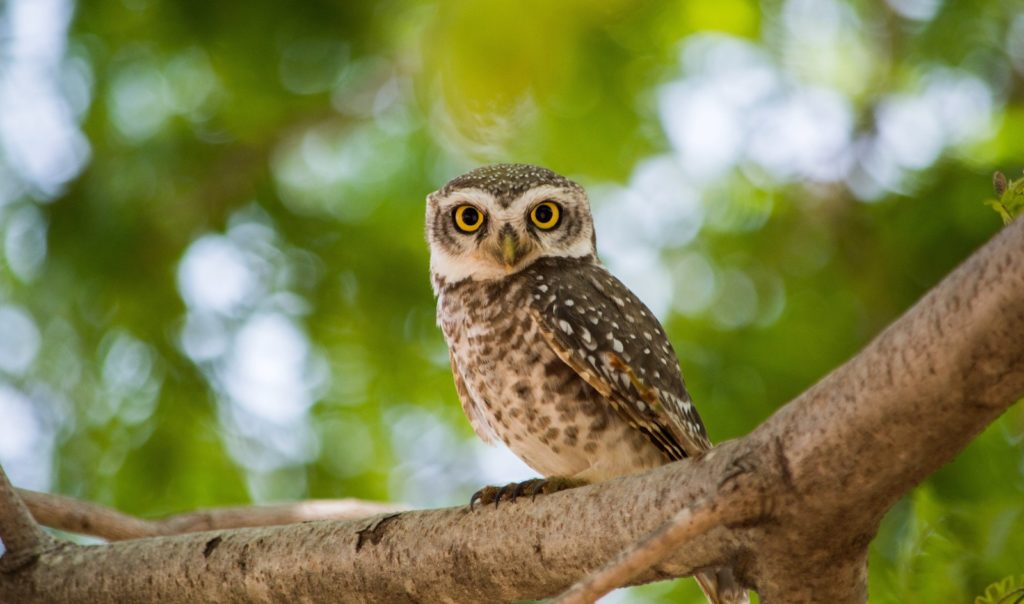
Contact Operation WildLife for help.

